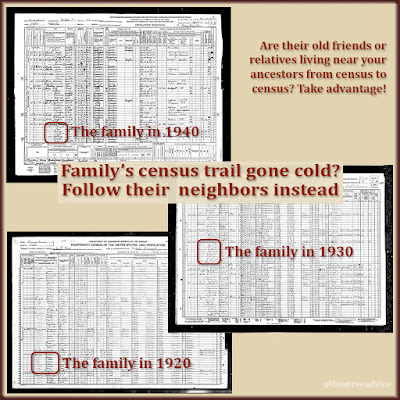I spent the last 2 weekends building a family tree for a woman who was stuck at the 1st great grandparent level.
I identified the names of EIGHTEEN of her 5th great grandparents. What a rush! It was all thanks to a ton of available vital records for her ancestral Italian hometowns.
Each time I found a new generation, I thought about what I could do to find their parents' names. It struck me that you could make a flowchart of the process—a series of Yes or No questions to tell you where to look next.
Let's see what that would look like. Say you know your immigrant great grandparents' names. You believe you know their birth dates, and you have an idea which town at least one of them came from. (This was the case for my client.)
What do you do next? Start by trying to prove your ancestor's birth date and hometown.
 |
| Nothing makes me happier than a set of marriage documents for my 2nd, 3rd, or 4th great grandparents. |
Can you find their immigration record? If they arrived at the right time, their ship manifest may have their hometown and a parent's name.
Can you find their naturalization papers? These may include their exact date of birth, their hometown, and their father's name.
Can you find their marriage record in their new country? This may include both sets of parents' names.
Can you find their official birth record from their hometown? This may include:
- their father's name and age at the time
- their father's father's name
- the street where they lived
- their mother's name and age at the time
- their mother's father's name
They included a father's name to distinguish a person from someone else in town with the same name.
If you found this record, you get to level up! You've reached the 2nd great grandparent level, and you may have a name or 2 from the 3rd great grandparent level.
How can you discover all your 3rd great grandparents on this branch?
Can you find the marriage record of your 2nd great grandparents? This will name all your 3rd great grandparents. It may tell you their ages at the time. It may include the names of their fathers, or their dates of death.
Can you find the death record for a deceased 3rd great grandparent from the marriage record? That should tell you the names of their parents—your 4th great grandparents.
Can you find the marriage record of your 3rd great grandparents? This should name your 4th great grandparents, and may give you a name or 2 of your 5th great grandparents.
 |
| If the records are available, you can climb generation after generation of your family tree. |
Don't Climb Too Fast
Beware of jumping from one ancestor's vital record to their parent's birth record. Let's say you find a birth record with a name that matches your 3rd great grandfather. How can you be sure he's your ancestor? Maybe someone else in town had the same name. That's all too common.
If that birth record doesn't say he later married the name you know for your 3rd great grandmother—you can't be sure you have the right person. You don't want to climb a stranger's family tree, do you?
The logical progression for climbing the tree when you have one ancestor's birth record is to:
- Find their parents' marriage record. These provide solid information about the earlier generation. You may have to scour several years before you find their marriage.
- Or find their death records. These will name their spouse (so you know it's the right person) and their parents.
Beware of errors, misspellings, and slightly wrong ages. Keep your mind open to name variations. "Teresa" on someone's death record may be "Maria Teresa" on her own vital records.
Don't overlook the awesome extras that may come with marriage records, at least in Italy. The associated documents may include:
- the bride and groom's birth records
- any of their parents' death records
- their paternal grandfather's death records
The reason for the death records is to prove that a parent is unavailable to consent to the marriage. And if your father was dead, they would want his father to provide consent. So you needed to prove everyone had died.
What a joy it is for us to find their death records. I love it when a marriage is in the sweet spot: Late enough to include the extra records, but early enough to have death records from the 1700s.
Proceed carefully:
- Rely heavily on marriage records for fuller information.
- Use death records only when they include the name you already know for the deceased's spouse.
- Turn to birth records if you already know both their parents' names, or you see their marriage written in the column.
Make no assumptions. Those lead to the types of errors we all hate to find on other people's online family trees.
One final note on marriage records: Pay attention to the town of birth. A bride and groom may come from different towns. In this case, the couple may marry in the bride's town, but live and raise a family in the groom's town. Why? Because the groom is more likely to inherit land and a home.
One birth record said the baby's father was born in this town, but its mother was born in another town. That told me to search the mother's town for this couple's marriage. And that's exactly where I found it.
With care, and the availability of records, you can build up a branch of your family tree several generations in one weekend. I did!









